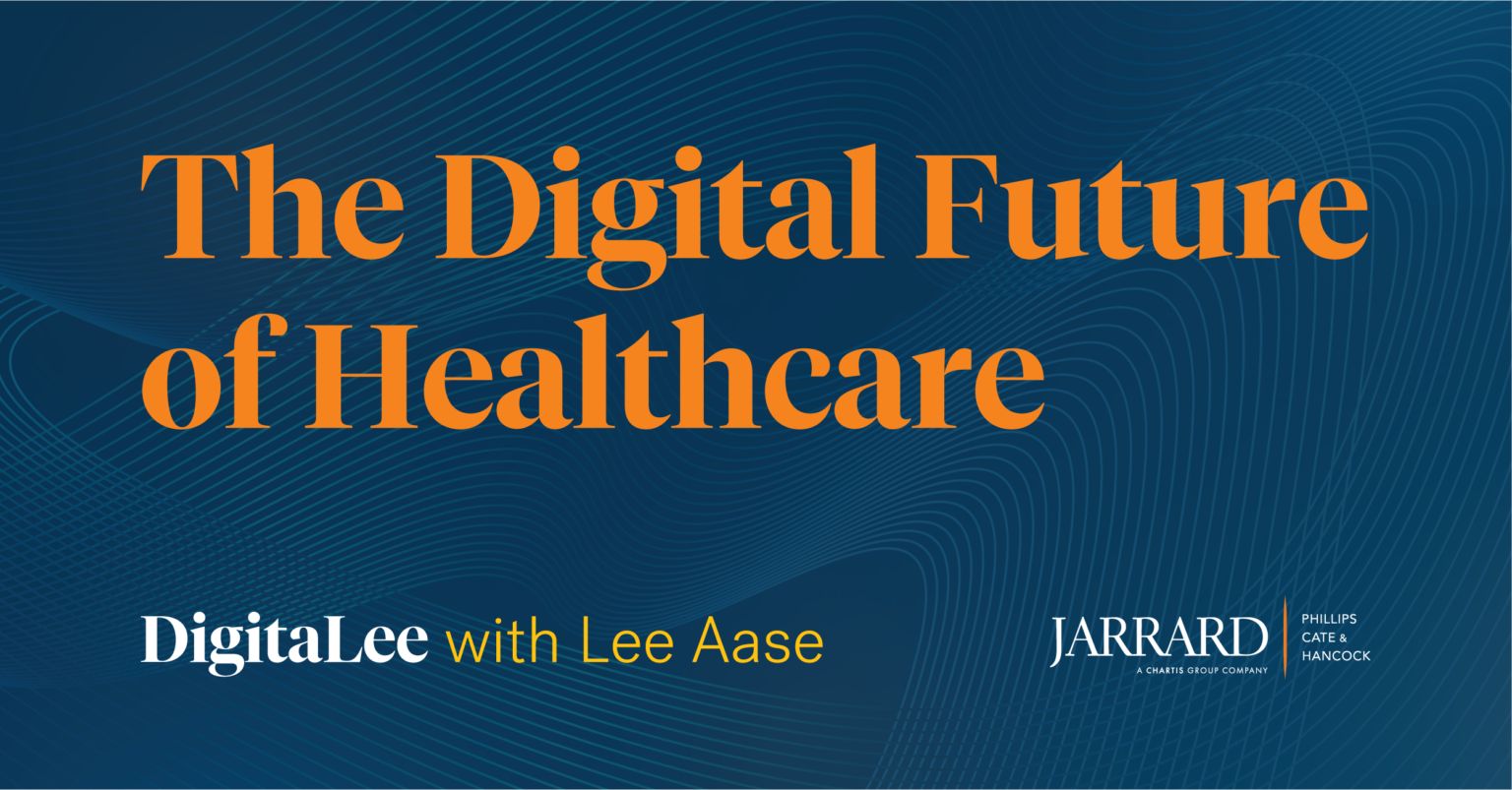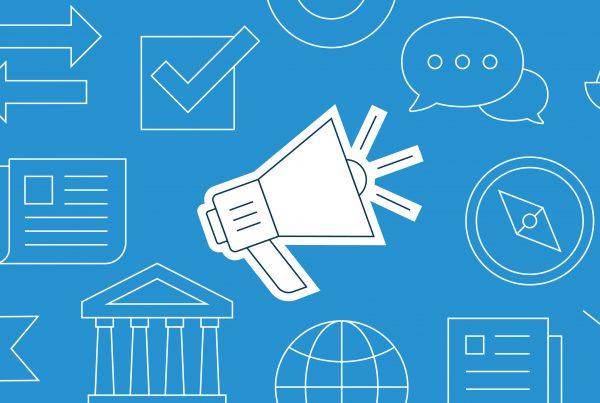Welcome to DigitaLee: The home of digital and social media for healthcare.
We’ve partnered with Lee Aase, formerly of the Mayo Clinic and Mayo Clinic Social Media Network. He’s joining us every other week to look at the role of digital and social media in healthcare. Each week we’ll look at a news story related to healthcare social media, a digital platform healthcare providers should (or shouldn’t) consider, and a digital tip of the week.
Today we’ve got a story on how doctors use YouTube to connect with patients and work towards health equity, the value of YouTube as a platform for healthcare providers, and for our tip of the day it’s whether hospitals and physician practices should consider using Twitter and LinkedIn polls.
Listen and subscribe to the podcast or read the transcript below.
Read the Transcript
David Shifrin: This is DigitaLee from Jarrard, Phillips, Cate & Hancock. I’m David Shifrin.
Twice a month, we highlight the headlines, platforms and best practices in digital and social media that healthcare organizations need to keep up and –better yet – get ahead. Today, we’ve got a story on using YouTube to connect with patients to work towards health equity, the value of YouTube as a platform for healthcare providers, and for our tip of the day it’s Twitter and LinkedIn polls.
The news theme of the day is from an article in Business Insider. The title was, “This Doctor Says YouTube Is a Crucial Way That She Connects with Patients, Here Is Why.” So, with that clickbait headline, the point is that Dr. Lisa Fitzpatrick works in underserved communities trying to improve access and health equity and has found that YouTube is a powerful tool for approaching that work.
So, Lee, what was your take when you saw YouTube being considered as a platform for health equity?
Lee Aase: Yeah, I think YouTube is a platform for health equity and just general health information for people, because we’re talking about doctors who are the well-respected voice due to the fact that it says MD behind their name. People are trying to sort out: “What should I believe? What should I know?” What I found in my career at Mayo Clinic was that sometimes even the longer videos that were going into more depth on a topic could be among the most valuable ones because they’re really reaching people at their moment of need. They’re giving them that in-depth information that they really need about their condition. Being able to address commonly held questions and beliefs and being able to address them authoritatively is a great, scalable way to reach a lot more people who maybe wouldn’t even come into the doctor’s office regularly. But they find someone with whom they identify, with whom they resonate and can build up some trust. It’s a great way to get some good health messages to people who maybe otherwise wouldn’t darken the door of a medical office.
DS: Let’s keep going with something that you mentioned: The value of in-depth medical information, because that runs a little bit counter to so much of the marketing, communications, social media and digital principles where everybody’s talking about how attention spans are shorter than ever.
Normally, you have to keep it tight. What are you seeing when it comes to “in-depth?” How far can you go with that before you start to lose people?
LA: Yeah. I mean, attention spans are shorter when it’s something like a public health message because it’s something that’s intended for a mass audience. But, when you get a particular kind of sick, that’s all you care about. It’s something that you’d really like to hear about from someone who knows about it. Say, “How do I deal with acne?” or, “How do I deal with some other condition that’s affecting me?” So, the beauty of YouTube is that is the place where people can have essentially unlimited time to follow a bunny trail of information that relates to what they’re interested in, since YouTube also serves up related videos on those topics.
One of the better videos that we had in my Mayo Clinic days was 10 minutes, it was on a particular kind of cancer, a blood cancer, and it got tens of thousands of views. It wasn’t millions of views – it wasn’t funny cat video territory – but it was the right kind of patients or their family members who really had that as an interest to help them to better understand the condition.
DS: So that’s a perfect segue into the second part of this, which is looking at YouTube as a search engine. It’s about not just thinking about YouTube and kind of the news and trends, but also as the platform that we want to focus on here. YouTube is owned by Google, of course, and it is a massive, massive search engine – I believe it’s the second largest in the world.
So, when you’re in it, Lee, you just mentioned the ability to serve up related videos and content to whatever you happen to have pulled up in your initial search. Because it’s such a powerful place for people to go and look for information, what should providers be thinking about in terms of their strategy around using video and YouTube in particular, to make sure that they’re serving up the content that people need where they’re looking for it?
LA: I think one of the keys with YouTube is to be sure that you’re effectively using your titles and your descriptions, putting in captioning as you can, both for accessibility with ADA compliance, but also because it makes it easier. Doing so gives more terms to be found within search – so, titles and tags and descriptions.
It’s important to recognize that it’s the number two search engine owned by the number one search engine. When you’re searching on Google, one of the tabs is “Videos,” and for some things, the first thing that’s going to show up is a video.
It’s often geographically contextualized as well. So, some of the things that may be nearby would show up – there’s some geographic preference with it. I think you just need to be sure that you are not only communicating to humans in the video, but communicating to the algorithm by how you tag, describe and title the videos.
DS: Cool. Okay, thanks. Let’s move on to the tip of the day.
We’re going to switch platforms here and look at LinkedIn and Twitter polls. I’ve been seeing more and more of this. I think maybe it’s died off a little bit over the last couple of months – kind of tail end of the summer of 2021 – but lots of organizations and lots of people have been posting quick polls on LinkedIn and Twitter.
Anecdotally, I’ve seen this coming more from the marketing and businesspeople in my network than from the healthcare provider folks. But that said, I think we all have seen those, and we’ve all probably responded to them. Some of them are goofy, some of them are a little bit more serious.
I guess the simple question is, “Is that a useful tool for healthcare providers to be considering, or is it just yet another social media, digital fad that’s going to be gone in six minutes and we’ll all forget about it?”
LA: It all depends on what you’re trying to accomplish. I’ve seen some people use them for education. For example, where there is actually a right answer to the question and they’ll put up a quiz and then they’ll do a follow-up with the right answer, and then they can use it. That’s the educational perspective.
Now, Twitter does not represent the world, okay? It’s a subset of…
DS: Hold on, hang on, hang on. Whoa. Back up.
LA: Twitter is opinions. It’s especially the opinions of those who are posting. There is a distinct minority of people who do so much of the posting that they aren’t necessarily reflecting the rest of the user base and Twitter users in and of themselves. It’s a distinct subset of the country, of the world. And so, Twitter polls are certainly not a scientific representation of what people really think.
However, probably, you get more engagement among the regular lurkers on social media and on Twitter in a Twitter poll. Because it’s anonymous, people can vote what they really think versus what they are supposed to think. If you reply to a comment, your name can be traced to what you’re saying versus on Twitter the poll, where the responses are anonymous.
I think depending on what you’re trying to accomplish, it can be helpful. I also think that LinkedIn polls are probably more reliable because they’re less susceptible to some kind of an organized, “Okay, somebody put up a poll and I’m gonna torture them with the answer that they didn’t want.”
That has been known to happen definitely on Twitter, for sure.
DS: Alright, I think we’ll call it good there.
Subscribe to Jarrard Insights & News
"*" indicates required fields



